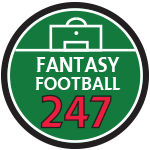Fantasy Football Tips from The World Of Poker
Fantasy football has become popular among the general public and in work offices across the land. It gives ordinary people the chance to become a football manager and compete for bragging rights, and often for prizes.
You wouldn’t instantly equate fantasy football with poker, but the two actually share fundamental similarities. Both are betting games that have elements of chance and skill – because there are aspects of skill, players can use knowledge and strategy to improve their outcomes.
Here are the top fantasy football tips from the world of poker.
Having a plan and applying a strategy
Not everyone applies a strategy when it comes to poker, and players employ their knowledge to a varying degree.
You’ll often see beginners say lines like, “It’s my favorite hand” and overvalue certain hands even when the odds say otherwise. A strategic player’s favorite starting hand is pocket aces. This is because, statistically speaking, this is the best starting hand, the one that will win the most often. Strategy gets much deeper than this, but learning more about the poker starting hands is the place to begin – it’s possible to find that information at https://www.ignitioncasino.eu/poker/strategy/poker-starting-hands.
The same is true in fantasy football. If you’re playing purely for fun, then of course you’re going to pick your favorite players from the team you support. With a more strategical outlook, however, you’ll be looking to pick players that can win points, or look for bargains that are about to hit a run of form.
In fantasy football, strategic players will look to make the best decisions with the information and budget available. If you take the same approach, you’ll start to see your results improve.
Variance
Here’s the snag. Although both poker and fantasy football involve elements of skill, i.e. aspects that you can control, they also contain elements of chance, i.e. aspects that you can’t control.
In poker, you can’t control the cards that are dealt to you, the other players, or the community cards that are still to come. You are always making bets based on the information available and on the probabilities of certain outcomes occurring.
You can get your money in ahead and still come out with a loss. You can be an 80 percent favorite in a hand, and the cards still fall the other way (they do so 20 percent of the time).
This is known as statistical variance. The easiest way to understand variance (and you can do this right now), is to flip a coin. There’s a 50/50 chance of the coin landing on either side, yet it won’t always fall in the order you expect. You might get three heads in a row before it falls on tails.
In the long run, the coin flip will even out, getting closer and closer to 50/50 the more times it is flipped.
There’s a lot of variance in fantasy football. You can analyse all the data available to you to make your picks, but outcomes can still happen that are beyond your control; your star player is injured during training; your goalkeeper makes a rare fumble; your midfielder is given a red card.
It’s for this reason that you can’t be results orientated. It’s possible to make excellent picks based on the numbers and still come out with way less points than expected.
Expected value and actual outcomes
Given that you shouldn’t think about your picks in terms of outcomes, how can you know that you’re making the right choices? This is a tough question, and to answer it we must delve deeper into a poker concept known as expected value.
Expected value is the amount you stand to gain in the long run for any given decision. An example in poker is that you have pocket aces against another player’s pocket 2s.
If all the money goes in the middle before community cards are shown, the aces has an 80 percent chance of winning the hand. The expected value, therefore, is 80 percent of the value of the pot. Regardless of the individual outcome, it’s possible to work out how much the move should make in the long term.
Let’s switch to fantasy football. Let’s say Erling Haaland has earned 21 points in his last three games. That gives him an average of 7 points per game. Therefore, you could say that picking Haaland has an expected value of 7 points.
You can apply even more analysis at this stage and aim to work out whether any factors will influence this average, such as predicted line ups, the teams the player will face next, or any hints about form and how it could improve or waiver.
For simplicity, let’s assume Haaland has an expected value of 7 points. You pick him, but he has a terrible game, fails to score or assist, and even gets a booking out of frustration. You come out with 2 points from Haaland.
This means your expected value was 7 points but your actual value was 2 points. This is a “bad run” in fantasy football. It does not necessarily reflect the quality of your selection, but rather your pick happened to fall on the rare occasion that Haaland achieved well below his average.
Expected and actual value can also work the other way around. Let’s say Haaland bags a hat trick and earns 12 points in one game. The actual value has come in at +5 compared to the average.
Final words
It’s been quite an in-depth look at the overlap between poker and fantasy football. The basic premise is that both games involve elements of skill and chance. This mixture means that they share fundamentals when it comes to how to approach them with a strategic mindset.
If you can make your picks based on the data and analyse and then look not at the outcomes, but the expected value of those picks, then you’ll be able to get one step ahead of friends at the office or competition online.

